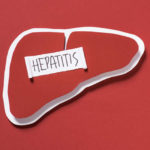How Mothers May Infect Their Children with HCV
Derek Thaczuk
http://www.aidsmap.com
A new meta-analysis has confirmed that the mother-to-child transmission risk for hepatitis C virus (HCV) nearly doubles for mothers who are HCV/HIV coinfected. In coinfected mothers with detectable HCV viremia, the risk is nearly tripled. The results, published in the April 15th issue of Clinical Infectious Diseases, confirm those of a 2003 meta-analysis by another researcher.
Rates of vertical (mother-to-child) transmission of HCV range from 4 to 10%; mothers coinfected with HIV are more likely to transmit HCV to their child. An earlier meta-analysis (Pappalardo, 2003) determined the odds ratios for HIV-coinfected compared to HIV-negative mothers as 2.82 (95% CI, 1.78 to 4.45, p=.00001) for HCV antibody-positive women, and 1.97 (95% CI, 1.04 to 3.74, p=.04) for women with HCV viremia (detectable HCV in the blood).
Researchers from Johns Hopkins University School of Medicine have now performed a similar meta-analysis including two large studies not published at the time of the Pappalardo review. One of these – the European Pediatric Hepatitis C Virus Network (EPHN) study – is the largest such cohort to date, including 1479 babies.
The team’s conclusions were drawn from a restricted analysis that they believed provided the most reliable estimate (details below). According to this analysis, vertical transmission was 1.9 times more likely for HIV/HCV coinfected mothers than for HCV-infected mothers without HIV (95% confidence interval, 1.36–2.67). For coinfected mothers with detectable HCV viremia, the risk was 2.82-fold greater (95% CI, 1.17 to 6.81) than for HIV-negative mothers without HCV viremia.
Much of the Johns Hopkins report details the methodology of how studies were selected for the meta-analysis. The original literature review found 243 “potentially relevant” published articles (conference abstracts were not considered). From these, the team selected only results published in English which (among other criteria) presented original data, compared coinfected with HCV-monoinfected women, and included at least 20 coinfected women. This left only ten (mostly European) studies, published between 1993 and 2005 (Lam, 1993; Zanetti, 1995; Paccagnini, 1995; Zuccotti, 1995; Tovo, 1997; Zanetti, 1998; Granovsky, 1998; Resti, 2002; Rerrero, 2003; EPHN, 2005). All but one of these were prospective cohorts, yielding a total of 4424 mother/child pairs, 19.4% of which included coinfected mothers.
However, the investigators felt that the “most reliable estimate” came from an even more restricted pool – the five studies with sample sizes of at least 50. The odds ratio for coinfected mothers, calculated from the ten originally selected studies, was 2.75 (95% CI, 1.51 to 4.99). However, analysis indicated that the estimates in this group were “heterogeneous and ideally should not be pooled”. The lack of comparability was ascribed to “a lack of standardised HCV diagnostic criteria and the inability to control for known confounders” – such as selection bias, loss to follow-up, and means of delivery (Caesarean vs. live birth). The researchers therefore analysed various subgroups of the ten studies, leading to the 1.9-fold odds ratio drawn from the five studies (Paccagnini, Tovo, Granovsky, Resti, and EPHN) which “showed low heterogeneity, and were of better overall quality.”
Despite the similarity to the 2003 findings, the report concludes that more research is still required, particularly calling for “large studies that control for potential known confounders, use clear selection criteria … and employ standardized HCV testing[.]”
References
Polis CB et al. Impact of maternal HIV coinfection on the vertical transmission of hepatitis C virus: a meta-analysis. Clin Inf Dis 44:1123-1131, 2007.
Pappalardo BL. Influence of maternal human immunodeficiency virus (HIV) co-infection on vertical transmission of hepatitis C virus (HCV): a meta-analysis. Int J Epidemiol 32:727-734, 2003.







